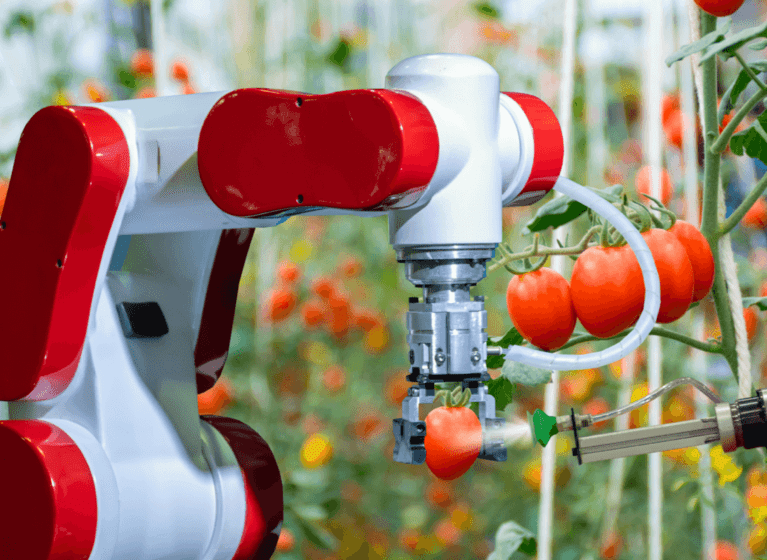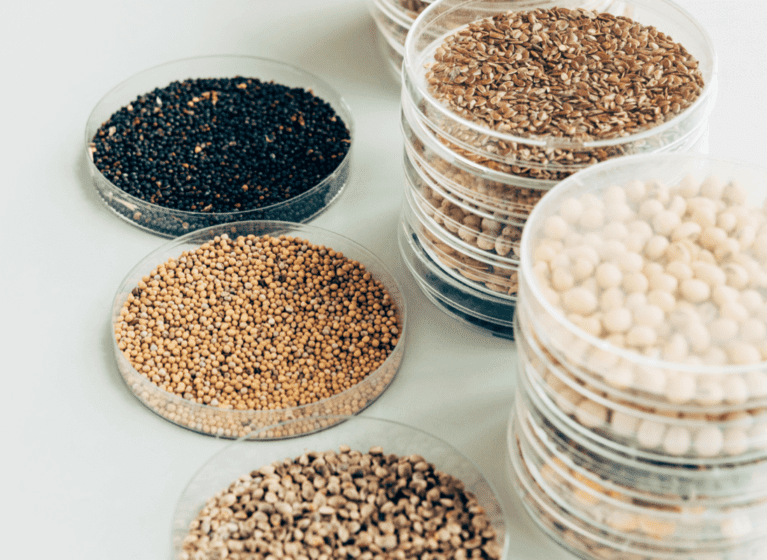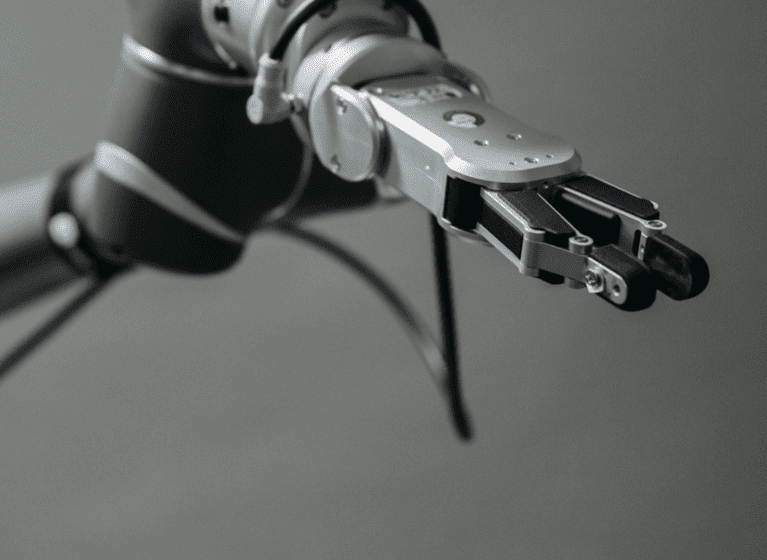Whereas pharma and biotech dominated the Australian legal landscape in 2017, 2018 saw legal issues in a diversity of technology under the spotlight. So what did we learn? Among other things, 2018 was the year that:
- saw the pendulum starting to swing back on patentable subject matter, bringing some hope to applicants in the CII and genetic technology space;
- brought us a number of significant damages decisions after the drought breaking landmark decisions we told you about in 2017;
- provided us with guidance on how to ‘fix’ that peculiar Australian ground ‘best method’; and
- confirmed Australia’s consistency with other jurisdictions, and the need to ensure support for broader claims by way of evidence available at the time of drafting as well as statements of theory to support plausibility when drafting PCTs.
Another year, another chapter in the chronicles of best method …
Dometic Australia Pty Ltd v Houghton Leisure Products Pty Ltd [2018] FCA 1573
In our 2016 year in review article we brought you an update on what was, at the time, a rare decision on Australia’s ‘best method’ requirement. In our 2017 year in review article we reported on this ground of invalidity adding the scalps of more cases including that of an application directed to compounds for treating viral infections that failed to tell the skilled person how to make the compounds or where to source them from (Kineta). In this latest twist, the Australian Patent Office and the Federal Court have both permitted a divisional application to save the day when the parent case was found to be lacking.
The first instance was in respect of the above mentioned Kineta application. A divisional application was filed – and accepted – to which had been added the source of the compounds (which was known to the applicant at the time of filing the parent) and the synthetic methodology (which the applicant had not known earlier).
The second instance referenced above, Dometic, saw the Federal Court arrive at the conclusion that a divisional application to which the best method was added remedied the best method issue present in the parent application, and the best method attack against the divisional was unsuccessful.
The key in both instances was that the applicant of the divisional did not know the best method at the time of filing the parent application. The relevant Australian provision requires disclosure of the ‘best method known to the applicant of performing the invention’ at the time of filing. Both of these decisions deem the filing date in question to be the actual date of filing of the divisional application and not the effective filing date of the divisional application.
Computer implemented inventions: 2018 was the promo; the full feature will be out in 2019
Encompass Corporation Pty Ltd v InfoTrack Pty Ltd [2018] FCA 421
Are computer implemented inventions patentable in Australia? Yes. And no. While there are no statutory exclusions to software or methods that are implemented as computer software, the inclusion of computing hardware or processing steps within a claimed method or system is insufficient on its own to confer patentability.
In March this year, the Federal Court again considered the issue of subject matter eligibility of a computer implemented invention and found that the invention was not directed to subject matter that is eligible for patent protection largely on the basis of the answer to one question – does the invention result in an improvement within the computer (which was patentable) or merely require generic computer implementation?
The patent application in issue was directed to the field of information retrieval and data visualization. In particular, the invention was directed to a process for retrieving information about a particular entity (eg organisation or person) from multiple remote databases and displaying the results in the form of a network of interconnected nodes. Users could search for further information related to a particular node by selecting the node. In the backend, the system would automatically create a search query, query the remote databases, retrieve results and display them to the user. In answering the question above, the Court concluded that the invention did not improve the functionality of the underlying machine in any way and did not represent patentable subject matter.
Encompass appealed this decision in May 2018 and it was heard in early November, with an unprecedented number of private practice and in house patent attorneys listening in. The Commissioner of Patents, as the respondent made submissions, as did The Institute of Patent and Trademark Attorneys (IPTA), a local body of patent attorneys. In a further sign of the significance of this case and the issues at hand, the Federal Court assigned five judges to the appeal compared to the normal three. The appeal decision, expected in mid-2019, is being eagerly awaited by some, and anxiously awaited by others.
When the role of the computer is and isn’t inventive
Rokt Pte Ltd v Commissioner of Patents [2018] FCA 1988
Keeping with the computer theme, the Federal Court considered an appeal from a patent office decision to refuse an application directed to a computer implemented method on the basis that the claim was directed to non-patentable subject matter.
As discussed in more detail here the claimed invention revolved around linking a computer user to an advertising message by way of an intermediate engagement offer which is operable to drive a higher level of engagement with the advertising message than if the advertising message was presented without the offer. The issue the Court considered was whether there was a technological innovation, confirming the approach of previous decisions and the legal principle that the invention had to lie in the computerisation and not simply be a business method put in to a computer as set out in Research Affiliates LLC v Commissioner of Patents [2014] FCAFC 150; 227 FCR 378 and Commissioner of Patents v RPL Central Pty Ltd [2015] FCAFC 177; 238 FCR 27.
In the absence of what the Court described as a “formula to be mechanically applied”, the Court looked to understand where the inventiveness or ingenuity resided, and concluded that the invention solved not only a business problem but also a technical problem. The business problem – attracting the attention of the user and having the user choose to interact with the advertiser – was translated into the technical problem of how to utilise computer technology to address the business problem. And as summarised by the Court, “Known components had been integrated into a single system in an innovative and previously unknown way. The invention brought together some new elements and some known elements to form a working combination that had not previously been achieved and involved the use of computers in a way that was foreign to their normal use as at December 2012”.
While this case again illustrates the fact-specific nature of the outcome, there is a consistency of approach that the use of computers must be integral, rather than incidental, to the invention in the sense that there is an invention in the way in which the computer carries out the business scheme.
Was the patent drafted in good faith and with reasonable skill and knowledge? The $6.7 million question.
Generic Health Pty Ltd v Bayer Pharma Aktiengesellschaft [2018] FCAFC 183
Our 2017 year in review article discussed the landmark damages decision in Bayer Pharma Aktiengesellschaft v Generic Health Pty Ltd [2017] FCA 250 which saw the primary judge award Bayer damages of more than AU$25 million (around US$20 million), plus interest, plus an award of costs on the higher “indemnity” scale rather than the usual “party-party” scale. Generic Health appealed the damages order.
One aspect of the appeal related to the fact that Bayer’s patent was amended during the infringement proceedings. And under Australian law, where a complete specification is amended after becoming open to public inspection, damages shall not be awarded in respect of any infringement of the patent before the amendment unless the court is satisfied that the specification without the amendment was framed in good faith and with reasonable skill and knowledge. Generic Health alleged that the primary judge erred in concluding the Bayer had discharged its onus of proof in this regard. The period of time, between publication and the amendment, was worth AU$6.7 million.
The amendment in question was to limit a drug range in the claims to 3mg, whereas the claim pre-amendment defined a range of 2mg to 4mg. The crux of Generic Health’s case on this point was that at the time the specification was drafted, there was no evidence put forward that confirmed that Bayer had a report which provided scientific basis for both the lower and upper limit. Accordingly, Generic Health contended that Bayer did not have ‘reasonable knowledge’ as to the upper limit of the dosage range of 4mg, and that it was a mere inference by the primary judge that Bayer had the report.
Guided by UK law, on which the relevant provision in the Australian Act is based, the appeal court rejected Generic Health’s challenge, deeming it be based “on a fundamental misunderstanding of the obligation placed on a patent applicant and a patentee with respect to the drafting of a complete specification, as well as on a fundamental misunderstanding of the scope and purpose of s115(1) of the Act”:
- Good faith was a test of honesty, assessed by reference to what the patentee or his agent knew, with a view to obtaining a monopoly to which, on the material known to him, he believed he was entitled.
- Reasonable skill and knowledge goes to the competence of the drafter, but with an underlying assumption that the drafter has been properly instructed on the details of the invention. It does not however require the drafter to have the documents or information necessary to justify or substantiate scientifically all features of the invention described and claimed.
The appeal court therefore upheld the primary judge’s finding that Bayer had established that the unamended specification had been framed in good faith and with reasonable skill and knowledge, and that damages were therefore available for pre-amendment infringement. One of Generic Health’s grounds of appeal however was successful, which resulted in their damages being reduced by 2% – which equated to just over about AU$700,000 with interest.
Damages, damages and more damages
Sigma Pharmaceuticals (Australia) Pty Ltd v Wyeth [2018] FCA 1556
In contrast to Bayer’s damages outcome, this year the shoe is on the other foot, with Wyeth ( which became a subsidiary of Pfizer) facing payment of damages to both the Australian government and to a number of generic companies some 6 years after an appeal court found the Wyeth (Pfizer) efexor method patent invalid.
In early 2016 we reported on the Australian government seeking compensation from a number of originators including Wyeth (Pfizer) for losses arising from the granting of an interlocutory injunction restraining the launch of a generic drug. In Australia, the listing of the first generic version on the Pharmaceutical Benefits Scheme (PBS) triggers a statutory 16% price reduction of that medicine. An interlocutory injunction, restraining the launch of a generic version of the medicine while the originator’s patent is in force, therefore delays the price reduction. In exchange for the granting of the interlocutory injunction, the originator is required to give an undertaking to the Court to compensate parties who were unfairly restrained in circumstances where the originator’s patent is invalidated or not infringed.
So when it came to the question of who had been adversely affected by the efexor injunction in addition to the generics restrained by the interlocutory injunction, the Australian Government argued that they too had been adversely affected, as they had been paying the non-discounted price of the original medicine since the interlocutory injunction had been put in place, and they sought compensation to recoup those losses. In this instance Wyeth (Pfizer) settled the Australian Government’s damages claims in relation to the failed efexor defence. The amount is not known although a report from the Australian securities regulator apparently mentioned a cash reserve for potential claims and litigation of AU$48.5M. The settlement was closely followed by a 448 page decision that presented a detailed and measured consideration of enforcement of undertakings and factors relevant to the calculation of damages payable to generic companies.
At first blush, this decision represents a win for the generics, giving them a new tool to resist an interlocutory injunction. But the decision undoubtedly also provides valuable insight that will inform and mould innovator strategy.
A delicate balance of convenience: Australia’s first biosimilar interlocutory injunction
F.Hoffman-La Roche AG v Sandoz Pty Ltd [2018] FCA 874
Despite the potential repercussions noted above for innovators in seeking an interlocutory injunction, F. Hoffman-La Roche AG and its Australian subsidiary Roche Products Australia Pty Ltd (Roche), successfully sought an interlocutory injunction against Sandoz Pty Ltd (Sandoz) following Sandoz’s Pharmaceutical Benefits Scheme (PBS) listing of rituximab containing products.
The applicant for interlocutory relief must establish a ‘prima facie case’ for final relief, and that the balance of convenience and justice favours the grant of an injunction. Sandoz, who was planning to launch two biosimilar products called RIXIMYO, accepted that its proposed conduct would infringe Roche’s asserted method claims directed to uses of their rituximab containing product MABTHERA. And while Sandoz cross-claimed that the asserted claims did not involve an inventive step, the Court concluded “that the invalidity case is arguable, but it is not, for present purposes (and I emphasise, on a provisional view), possible for me to conclude that it is strongly arguable, as Sandoz urges”. The prima facie case was therefore established, and the Court therefore focused on the balance of convenience.
In considering the balance of convenience, Roche focused on the substantial and irreparable harm they would suffer, essentially relying on its well-established market position, the triggering of the statutory 16% price reduction of MABTHERA, together with the market entry of additional biosimilars, and loss of goodwill in support of their claim. From the other perspective, Sandoz pointed to the lost opportunity of being the first mover in the market and “an invaluable commercial advantage that, if restrained, it would lose”.
There is no doubt that the success or otherwise of an interlocutory injunction is highly fact specific and indeed the Court noted in this instance that the matters raised by Sandoz made “the balance more finely tuned”. But ultimately the Court concluded that “the balance of the case and justice lies in favour of the granting of interlocutory injunctive relief”.
Australia remains (relatively) gene friendly
Meat & Livestock Australia Limited v Cargill, Inc [2018] FCA 51
Despite Australia’s highest court deeming isolated nucleic acids as unpatentable subject matter, the Australian Patent Office has applied the tests set out in the 2015 Myriad High Court decision quite liberally. And this year saw the Federal Court confirm that Australia is still a gene friendly jurisdiction, and that patent protection is available where the naturally occurring genetic information is utilised in a practical and effective way.
The claims the subject of this decision were directed to the identification of single nucleotide polymorphisms (SNPs), and the correlation of those SNPs with desirable traits in cattle such as marbling and growth. The Court held that while SNPs exist in nature, the claims were directed to the practical application of that information. Specifically, Beach J stated “It [the claimed invention] is not just the mere identification or discernment of the naturally occurring phenomenon, contrary to MLA’s assertions. The claimed method involves human interaction and the creation of an artificially created state of affairs. It requires the taking of a nucleic acid sample of the bovine subject through an appropriate procedure. It requires the identification in that sample of at least three SNPs that meet the requirements of the claim, which involves analysing the sample to identify SNPs present that are associated with the trait. It involves the creation of an artificially created state of affairs of economic significance through human interaction.”
This Federal Court decision did not need to distinguish the High Court in Myriad, given, as noted by Beach J, that there was no suggestion in the Myriad decision that claims to methods involving the practical application of gene sequences as being patent ineligible naturally occurring genetic information. And it is with great interest that we await the outcome of the Sequenom v Ariosa case in Australia due to be handed down in 2019, concerning the patentability of genetic testing methods, and whether Australia will be a happier outcome for Sequenom than the US. Stay tuned!
Why chocolate is sufficient but coffee is not. And neither are supported.
Mars, Incorporated v Kraft Foods R & D, Inc. [2018] APO 62 and Stephen Anderson v K-Fee System GmbH [2018] APO 56
An objection that “The invention defined by claims 1-4 lacks support under subsection 40(3)” is invariably accompanied by “Based on the same reasons as specified in the previous paragraph, the complete specification also does not satisfy the requirements of subsection 40(2)(a) because it does not provide sufficient information to enable the skilled addressee to perform the invention over the full width of these claims…”. But support and sufficiency are two very different requirements, and for two applications dealing with two staple products in many people’s lives, the outcomes reflected this.
A coffee capsule “for producing a crema-free coffee beverage” of K-Fee System failed to satisfy both – on the basis that the examples showed that combinations of claimed features did produce crema (lacked support) and the specification did not provide clear guidance on which combinations of parameters would produce crema-free coffee (lacked sufficiency). Kraft’s heat resistant chocolate in contrast was deemed sufficient but not supported.
The distinction between the two grounds can be more clearly illustrated by a side by side comparison of the three step tests for each:
| Sufficiency | Step | Support |
|---|---|---|
| Construe the claims to determine the scope of the invention. | 1 | Construe the claims to determine the scope of the invention. |
| Construe the description to determine what it discloses to the person skilled in the art. | 2 | Construe the description to determine the technical contribution to the art. |
| Decide whether the specification provides an enabling disclosure of all the things that fall within the scope of the claims. | 3 | Decide whether the claims are supported by the technical contribution to the art. |
Kraft’s heat resistant chocolate is described as being produced by controlling release, under certain conditions, of water from hydrated materials during production. This control, and not the materials, confer the heat resistance. Thus the controlled release was deemed to be the contribution to the art. But at the claims did “not clearly define that the conditions under which the processing is performed releases the water of hydration”, it was concluded that the claims were not supported by the technical contribution to the art. But when it came to sufficiency, the Patent Office found the hypothesis of how heat resistance was imparted to the chocolate to be plausible, and no undue burden of experimentation was required to confirm the water content.
As a post-script to the decision, Kraft amended the claims to define that the process steps result in the controlled release of water of hydration. K-Fee has also filed amendments in an attempt to overcome the support and sufficiency issues.





















